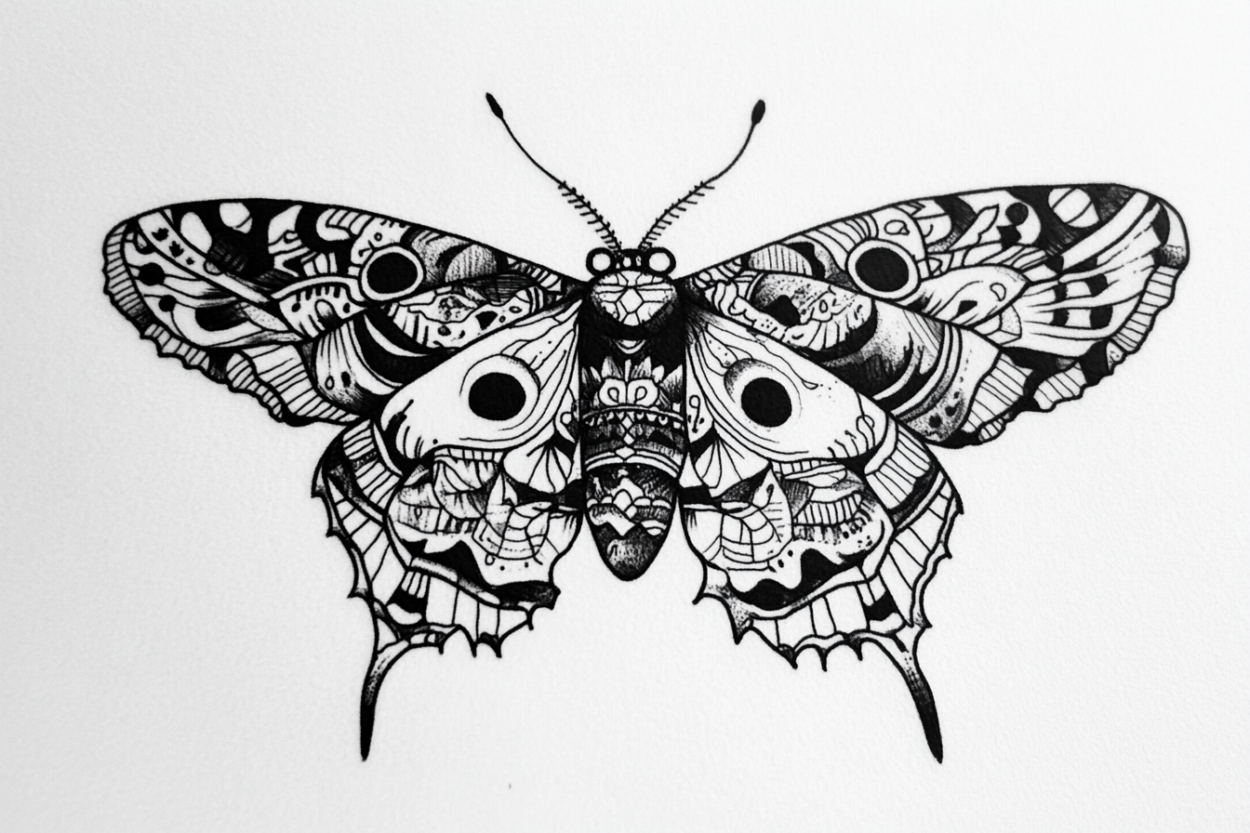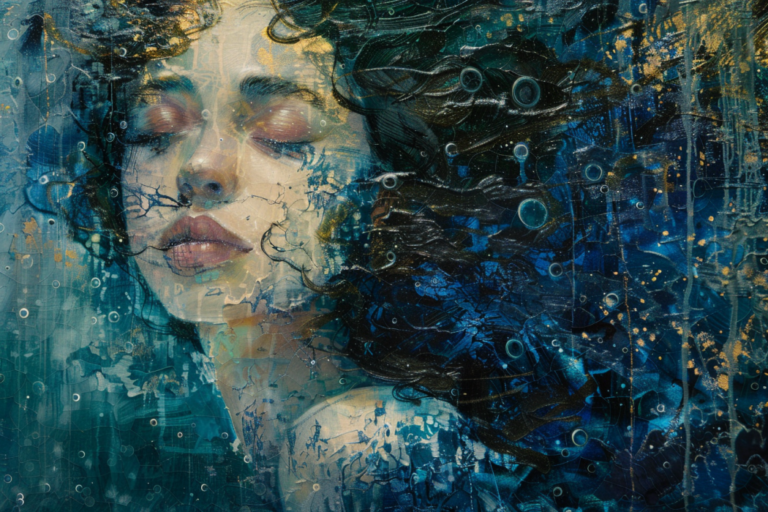Moth Symbolism Across Cultures and History
Moths and butterflies are closely related, but people see them very differently. Butterflies are colorful, active during the day, and symbolize happiness, beauty, and good luck. Moths, on the other hand, are usually dull-colored, fly at night, and are often linked to mystery, death, and the unknown.
Many cultures see moths as symbols of transformation, intuition, and the search for truth. Their attraction to light is often seen as a spiritual journey or a warning about blind obsession. Others connect them to souls of the dead or bad omens because of their nighttime habits.
Moth Symbolism in Cultures

1. Transformation
Moths, like butterflies, go through metamorphosis, making them symbols of personal growth and transformation. They start as caterpillars, enter the cocoon stage, and emerge as winged beings, reflecting life’s transitions and the journey toward spiritual enlightenment.
- In Ancient Egyptian art, moths and butterflies were depicted in tomb paintings, representing the soul’s journey into the afterlife.
- In Mesoamerican beliefs, the moth’s transformation symbolized rebirth and change, much like the butterfly.
- In Shamanic traditions, moths represent the need for inner change and growth, guiding individuals toward self-discovery and higher wisdom.
Read More: Symbols of Growth and Transformation Across Cultures
2. Attraction Light: Seeking Truth or Blind Devotion
Moths are famously drawn to flames and artificial light, often interpreted as a spiritual metaphor for seeking truth. However, this attraction is also linked to blind devotion and self-destruction.
- In Sufi poetry, Rumi frequently used the moth’s flight toward the flame as a symbol of a lover’s yearning for the divine (“The Masnavi” by Rumi).
- In Shakespeare’s Merchant of Venice, the line “Thus hath the candle singed the moth” reflects the idea of reckless attraction leading to ruin (Act 2, Scene 9).
3. Death, Rebirth, and the Afterlife

Moths have long been connected to death and the afterlife, often seen as omens or spirits of the dead. Their nocturnal nature and attraction to flames have reinforced their association with darkness and mortality.
- In British and Irish folklore, white moths inside a home were believed to be souls trapped between worlds, warning of illness or death
- In France, the moth was called le papillon de la mort (the butterfly of death), and its presence near a dying person was seen as a sign their soul was leaving.
- This moth gained pop culture fame in The Silence of the Lambs, where it symbolizes transformation and death. The film actually used live moths for the scenes inside Gumb’s house, featuring real death’s-head hawkmoths. Specifically, the species shown were Acherontia atropos, the African death’s-head hawkmoth, and Acherontia styx. These moths naturally have skull-like markings on the back of their thorax.
- In Mexico, if a Black Witch Moth enters a home, it is believed that someone in the household will soon die.
- In the Bhagavad Gita, moths flying into flames are a metaphor for self-destruction and fate. Quoting Bhagavad Gita 11:29 – “As moths rush with great speed into the blazing fire to their destruction, so also do these creatures swiftly rush into Your mouths to perish”. The moth-flame metaphor also appears in Buddhist teachings, representing ignorance and attachment to illusion.
Read More: Symbols of Death Across Cultures
4. Intuition and the Unseen
Moths navigate in the dark, relying on intuition rather than sight. This makes them symbols of the subconscious, hidden knowledge, and spiritual insight. Many traditions see moths as messengers from the spirit world, guiding people toward deeper understanding.
- In Celtic mythology, moths were thought to be guides between worlds, carrying messages from the unseen realms.
- In Chinese culture, moths are believed to be spirits of deceased loved ones, visiting the living during the Qingming Festival.
Moth Symbolism in Art, Literature and Pop Culture

Van Gogh has a painting of the moth, “Great Peacock Moth”. He created it between 1889 and 1890 while in Saint-Paul-de-Mausole, a psychiatric hospital in France.

During the 1960s, the people of Point Pleasant, West Virginia reported sightings of The Mothman, a mystical winged creature linked to paranormal activity and disaster omens. The Mothman was documented in John Keel’s 1975 book, The Mothman Prophecies, which was later adapted into a 2002 movie starring Richard Gere.
- The Mothman is described as a large, dark creature with glowing red eyes and massive wings, resembling a giant moth or owl.
- Some believe the Mothman was warning of the Silver Bridge collapse in 1967, which killed 46 people.
- Others interpret Mothman as a harbinger of doom, similar to death-related moth folklore in Mexican, Irish, and Appalachian traditions.

The death’s-head hawkmoth (Acherontia atropos) plays a central symbolic role in The Silence of the Lambs (1991), a psychological thriller based on Thomas Harris’s novel.
- The moth is used by the serial killer Buffalo Bill, who places chrysalises in his victims’ throats, symbolizing his twisted desire for transformation.
- The skull-like marking on the moth’s thorax visually reinforces the theme of death and identity change.
- The film’s poster features a moth covering Jodie Foster’s lips, representing silence, secrets, and metamorphosis.
Moth Tattoo Symbolism

A moth tattoo carries deep meanings, often symbolizing transformation, resilience, intuition, and the pursuit of light. Unlike butterflies, which represent external beauty, moths symbolize inner growth and spiritual evolution.
- Transformation & Change
- Light & Truth-Seeking
- Death & Rebirth
- Mystery & Intuition
- Resilience & Strength
Read More: Symbols of Resilience in Arts and Cultures







